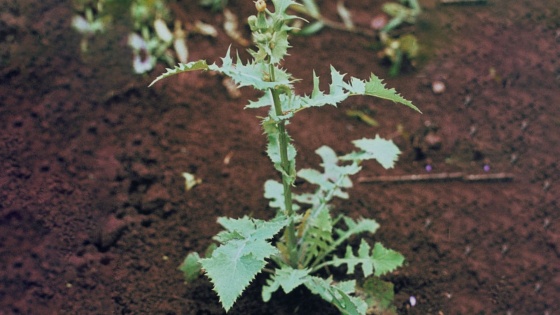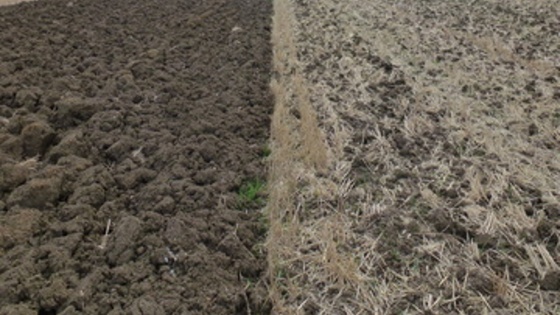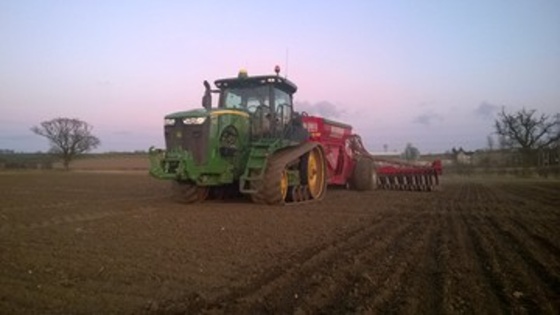Prickly sow-thistle
(sonchus asper)

Young plant
The cotyledons are oval and short stalked. The first true leaves are edged with backward-pointing teeth, and the overall shape that of a rounded diamond. The leaf is a dull blue green colour and the edge may be tinged with purple.
Mature Plant
The branched stem is smooth and hollow. The leaves are a glossy rich green and clasp the stem with rounded bases.
Flower
Flowerheads are pale yellow, 20-25mm across, and form loose clusters. Petals are reddish-grey beneath. The base of the flowerhead is flask -shaped, becoming more pronounced as it grows older.
Height 120cm
Prickly sow-thistle Profile
| Key feature | - Leaves are glossy and have sharp prickly edges and rounded bases that clasp the stem - taproot - Mid yellow flowers |
|---|---|
| Number of seeds produced per plant | 5,000 |
| Seed shed | May-October |
| Germination period | March-July and September to November |
| Germination depth | 5 cm |
| Primary dormancy | Low |
| Does it have a secondary dormancy? | Yes |
| Seed longevity | >5 years |
| Factor promoting germination | Light |
| Rate of seed decline with cultivations | High |
| Lifecycle | Plants which germinate in autumn overwinter as rosettes, producing flowers in May/june; plants germinating in spring flower in June. The latter can set seed in 10 weeks. Prickly sow-thistle only reproduces by seed and is distributed by wind |
| Geographical Location | Widespread in England and Wales |
| Soil Type | Nitrogen rich loams or nutrient rich sandy and stoney soils which are not too dry |
| Impact | Increasing found in arable rotations particularly in winter crops. Autumn germinating plants can overwinter as rosettes and flower in May, spring germinating plants flower in June 5% yield loss from 50 plants per m2 |
| Resistance risk | No resistance in the UK but populations resistant to ALS herbicides in France, Norway, USA and Canada |




